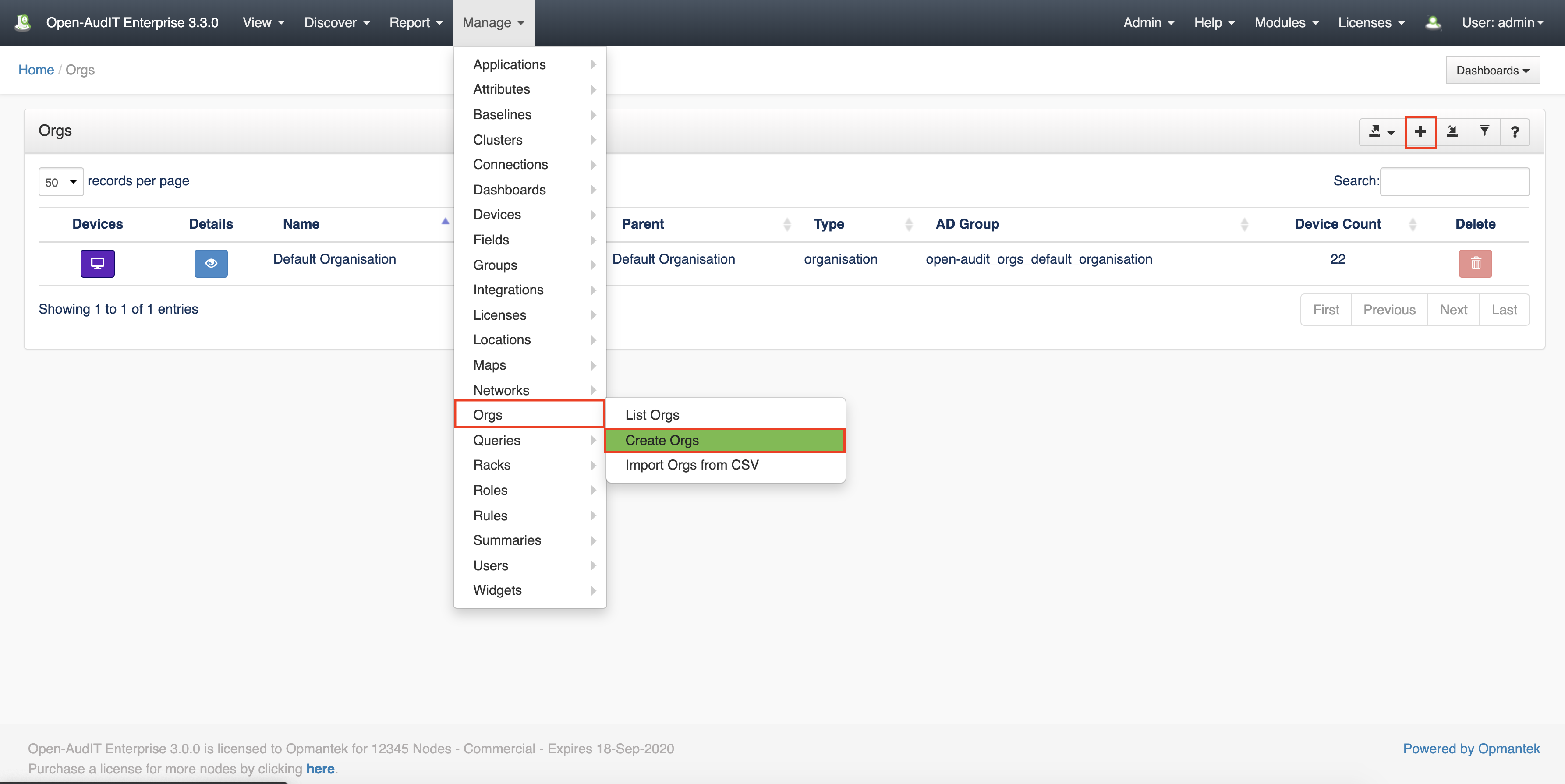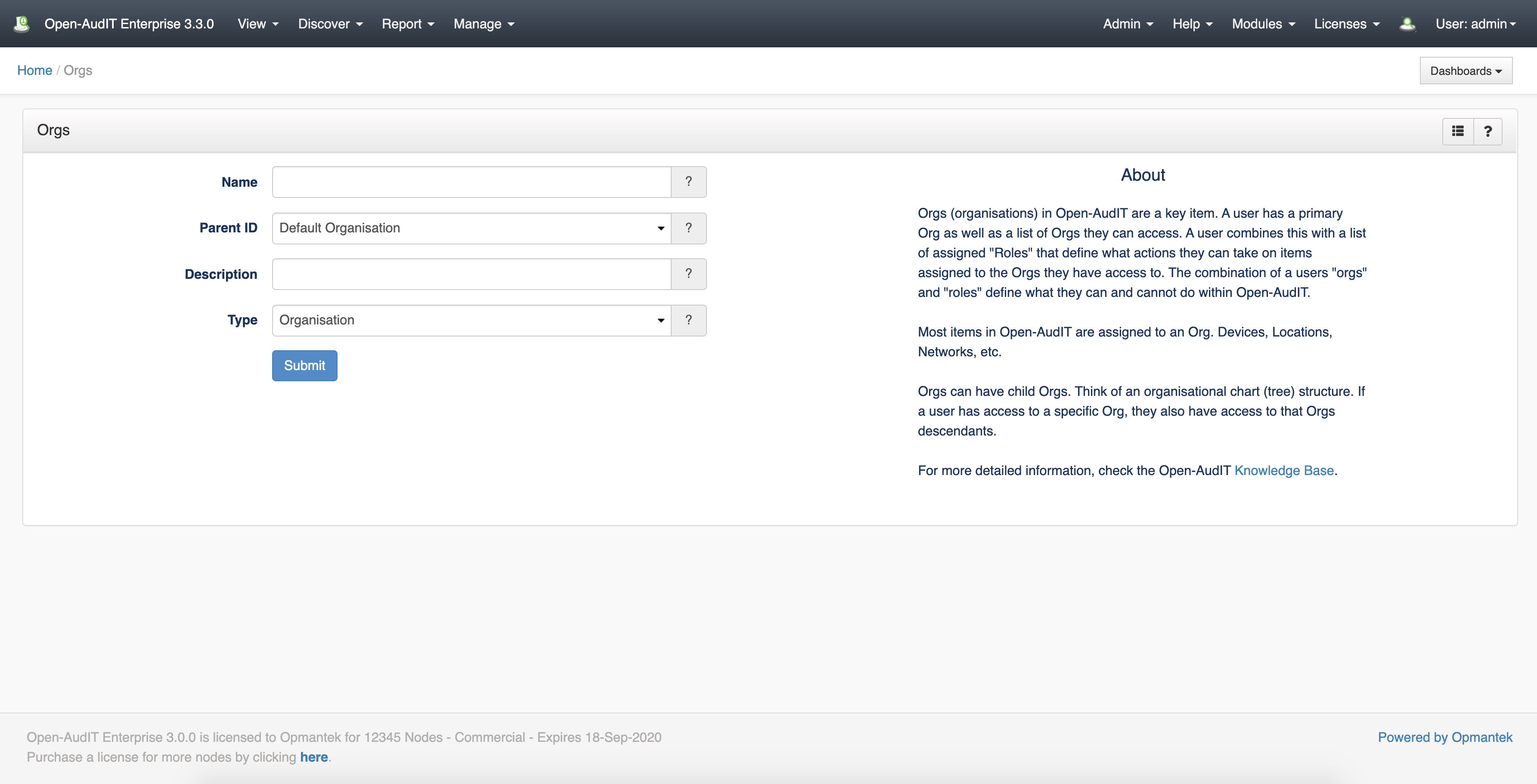Introduction
This new access method replaces the old admin_org controller and functions.
How Does it Work?
Orgs (organisations) in Open-AudIT are a key item. A user has a primary Org as well as a list of Orgs they can access. A user combines this with a list of assigned 'Roles' that define what actions they can take on items assigned to the Orgs they have access to. The combination of a users 'orgs' and 'roles' define what they can and cannot do within Open-AudIT.
Most items in Open-AudIT are assigned to an Org. Devices, Locations, Networks, etc, etc.
Orgs can have child Orgs. Think of an organisational chart (tree) structure. If a user has access to a specific Org, they also have access to that Orgs descendants.
Creating an Organisation
Join Paul McClendon, an Opmantek Support Engineer, as he demonstrates how to create organizations to be used in Open-AudIT.
To make another organisation go to menu: Manage -> Orgs -> Create Orgs.
View Organisation Details
Go to menu: Manage -> Orgs -> List Orgs.
Database Schema
The database schema can be found in the application is the user has database::read permission by going to menu: Admin -> Database -> List Tables, then clicking on the details button for the table.
API / Web Access
You can access the collection using the normal Open-AudIT JSON based API. Just like any other collection. Please see The Open-AudIT API documentation for further details.


